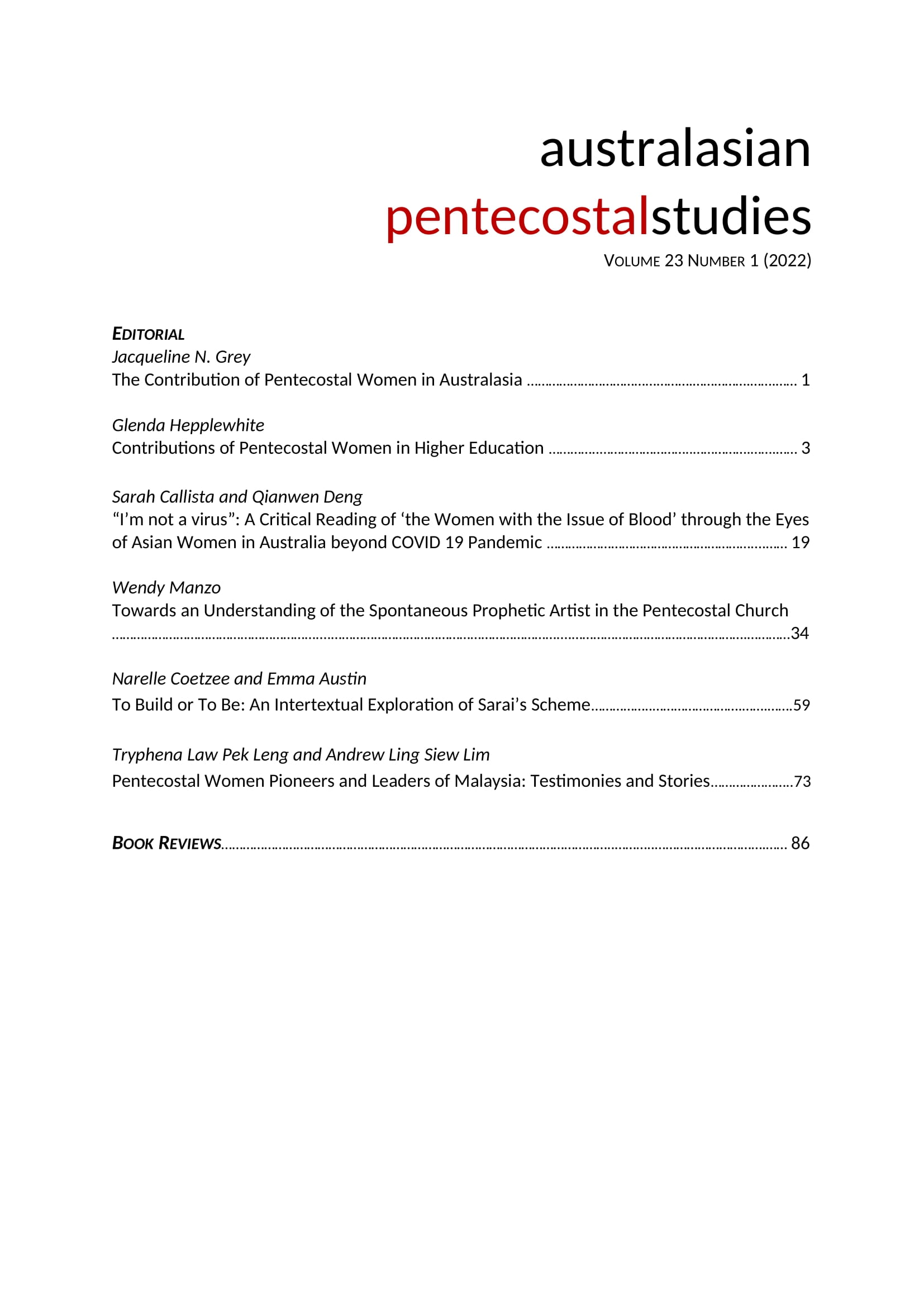Towards an Understanding of the Spontaneous Prophetic Artist in the Pentecostal Church
Abstract
Art is an enduring witness, and prophetic art is the visual form of prophecy. This article considers the role of the Holy Spirit in creative prophetic inspiration in Pentecostal liturgical and ecclesial settings. While theologians have addressed the changes of attitude toward the role of the arts in service to the Church, it has been with an emphasis on articulating the viewers’ experience of art rather than the artmakers. By beginning to explore a distinctively Pentecostal pneumatological approach to divinely inspired unpremeditated and unrehearsed visual artmaking, this article contributes to Pentecostal aesthetics by articulating the emerging identity of the prophetic artist in Pentecostalism. Prophetic artists are predominately women. Women are pioneering visual arts as an integrated part of the great commission. Presented through an autoethnographical framework, this study draws on auto-hermeneutics, systematic self-observation, and interpretative phenomenological analysis to describe and interpret the phenomenon of spontaneous prophetic art in the Pentecostal worship sanctuary. By communicating the lived experience of the prophetic artist as an authentic in-context narrative, this article sets comparisons for further research study and serves as an accessible way of deepening the reader’s understanding of spontaneous prophetic art experiences, bearing witness to the role of the Holy Spirit in arts ministries.
Downloads
Published
How to Cite
Issue
Section
License
Authors who publish with this journal agree to the following terms:
- Authors retain copyright and grant the journal right of first publication with the work simultaneously licensed under a Creative Commons Attribution License that allows others to share the work with an acknowledgement of the work's authorship and initial publication in this journal
- Authors are able to enter into separate, additional contractual arrangements for the non-exclusive distribution of the journal's published version of the work (e.g., post it to an institutional repository or publish it in a book), with an acknowledgement of its initial publication in this journal.
- Authors are permitted and encouraged to post their work online (e.g., in institutional repositories or on their website) prior to and during the submission process, as it can lead to productive exchanges, as well as earlier and greater citation of published work (See The Effect of Open Access).


